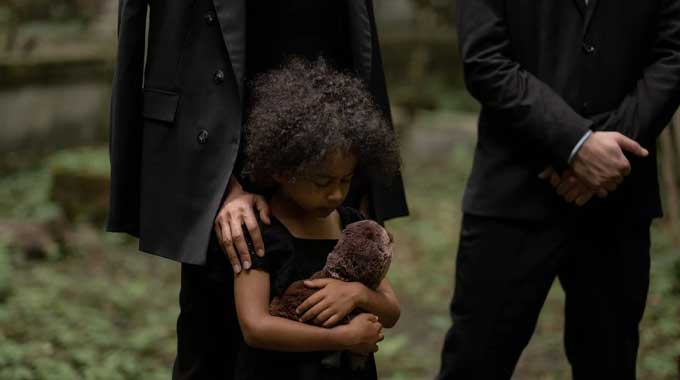When people think of trauma, they commonly picture a soldier that has been to war, children that have lived with abusive parents, or a person who has experienced sexual assault. However, everyone goes through some kind of trauma in their lives.
This could look like being shouted at by a teacher in school, a family member getting ill, experiencing a natural disaster, or even losing a parent in the supermarket. Trauma is simply an emotional response to unprocessed memories that are being triggered by our current environment.
Symptoms of Trauma
From mild to extreme, all kinds of trauma can be extremely difficult to live with and can get in a person’s way of living their life to the full. More severe cases of trauma can be highly detrimental to a person’s sense of safety and self, disorientating their understanding of the world and themselves they had before the traumatic incident.
Traumatic experiences commonly cause people to encounter a myriad of negative emotions, leaving them feeling:
- Unstable: having difficulty regulating emotions and impulses
- Self-conscious, alongside having low self-esteem and feelings of self-hatred
- Emotionally numb
- Anxious
- Hypervigilant and distrusting
- Shameful and guilty
- Angry and irritable
- Hopeless: it can feel impossible to overcome the negative impact trauma has had on their life
- Confused
- Out of control
- Like nothing is the same
- Dissociative: losing time, spacing out
A traumatic experience also makes people more vulnerable to developing an addiction due to a dysregulation of the stress system. This self-destructive behavior can come in the form of a substance use disorder or behavioral addiction e.g. gambling, sex, or porn. The feelings of self-hatred and being out of control also mean that self-harming behavior – such as cutting or burning – is relatively common for trauma survivors.
When someone’s trauma goes untreated and unaddressed, serious mental health conditions can develop; Post-Traumatic Stress Disorder (PTSD) or Complex Post Traumatic Stress Disorder (C-PTSD).
Treating Trauma
Trauma is extremely intricate, complicated, and personal to each individual. It sometimes stems from multiple situations, some of which the person may not be aware of or may have been too young to remember happening to them.
The job of the therapist is to assist in unpicking themes and dynamics that are adding to the overarching trauma from a person’s life story – such as past experiences, negative habitual beliefs, and self-destructive behaviors.
For these reasons, it is important to approach treatment in a highly individualized manner, including multiple methods of verbal and non-verbal emotional expression. Non-verbal communication and expression can be conducted through movement, dance, art, writing, and sound, among many others.
EMDR Therapy
The most research-supported approach for processing trauma-related memories is Eye Movement Desensitization and Reprocessing (EMDR) therapy. This method can be used to rapidly transform a traumatic memory into a non-traumatic event. EMDR basically re-consolidates the narrative of memories in an adaptive manner that makes sense to that individual.
The technique does not erase or recover memories as some people may think but simply changes how the person thinks and feels about them. With EMDR, someone can go into as much detail about themselves as they desire, making it a great option for people who struggle opening up or don’t want to go deeply into their trauma.

Somatic Experiencing
Sessions using this method involve introducing a small amount of the traumatic incident into the person’s mind, slowly desensitizing them to the traumatic event. One technique commonly used in somatic experiencing is pendulation. This requires the person processing the trauma to swing between the physical and emotional reaction to the trauma. Next, they are required to focus on a calming and positive resource, before swinging back to the traumatic memories. This allows for increased tolerance to the stressful traumatic reaction.
Hypnotherapy
This mind-body hypnosis makes use of a trance as part of healing. Here, a therapist guides their client through their memories allowing them to safely experience their emotions and better understand what happened to them.
Cognitive Behavioral Therapy (CBT)
CBT is a kind of talking therapy that helps identify and reframe triggers, behaviors, and thought patterns that have a negative influence on a person’s behavior and emotions.
What are Herman’s Three Stages of Trauma Recovery?
According to the work of Dr. Judith Herman, trauma recovery – or healing – unfolds in three main stages:
- Safety and stabilization
- Remembrance and mourning
- Reconnection and integration
Stage 1: Safety and Stabilization
The first stage of the trauma recovery process involves understanding the road map of the healing process and understanding how the trauma therapy will unfold. Here, a trauma therapist will help their client set appropriate goals and learn about how they will reach them.
During this first stage, the focus is not so much on processing traumatic memories but is more on allowing some kind of stability to be built up. The person undergoing therapy will learn to healthily express and regulate their feelings via verbal and non-verbal methods. This allows people to manage the trauma-related symptoms they are experiencing that are making them suffer and minimize unhelpful responses to them. This includes:
- Addressing addictions
- Addressing mental health illness
- Taking medication
- Participating in Dialectical Behavior Therapy (DBT)
After a traumatic event has happened, a person can feel unsafe in their own body, in relationships, and generally throughout their life. Establishing safety again is one of the main goals of this phase, and allows the person undergoing therapy to feel more positive, calm, and empowered. Here, they will learn techniques and receive resources from the trauma therapist, such as:
- Establishing a safe space: this could be the person’s bedroom, a magical fantasy land, or a beach in Australia. By imagining a place they feel calm and relaxed they have a place to go to during the sessions or in day-to-day life when things get too much.
- Tapping into and developing one’s inner strengths: getting a person to think of times they have overcome adversity or have felt proud of themselves allows them to regain a sense of self. Plus, it instills confidence that they can overcome adversity again.

Stage 2: Remembrance and Mourning
Stage one is a kind of damage control, where the person is just learning skills to cope with the negative mental and physical impact of their trauma. Once a person is stable enough, the therapist will assist them in exploring the memories associated with their trauma and processing them to reduce the impact they are having on their daily life. This way, the distress these memories can cause us is rapidly diminished and stops people from being tortured by them for years.
There are a number of effective memory processing methods that can be utilized during this stage, which involve re-experiencing a situation in a safe and healing space. This kind of metabolization of the event allows for it to be reintegrated into the brain’s neural networks in a different way. EMDR therapy is the most common method used during this stage to consolidate memories in a new and adaptive way.
However, this is not necessary in all cases. After stage one, some people realize they do not need to work through their trauma to achieve their short-term goals where it is no longer disrupting their life. This may change in the future if the trauma is brought up again, though it is up to the person undergoing therapy to choose when the right time for themselves is.
Loss commonly accompanies trauma, whether that be a person, a part of yourself (innocence, happiness, hopefulness), a relationship, or an expected part of life that didn’t happen. This perceived loss and grief can be difficult to accept, with it taking time to let go of the old parts of your life and yourself you are keeping a hold of.
During this stage having someone compassionately listen to you and agree that you went through something traumatic can help this process of acceptance along. Being told you are overreacting, need to be patient, or that everything happens for a reason is often not helpful as it minimizes a person’s grief.
Stage 3: Reconnection and Integration
The final stage of recovery for trauma survivors involves integrating the traumatic incident into their life and developing a new sense of self. People who have undergone traumatic events are commonly left feeling very disconnected from themselves and others, due to an automatic survival response trying to keep them safe from experiencing intense trauma again.
This third stage is vital to break distrustful habits and withdrawing behavior that may have developed and allow the individual to live a more fulfilling life going forward. This reconnection extends from meaningful relationships with others, relationships with one’s self, meaningful activities, and other parts of life that the person may have shut themselves off from.
Going through a traumatic event can cause a person’s world to be turned upside down and disrupt their emotional and physical well-being. However, from these tragedies comes an opportunity for growth, with many becoming stronger in ways they previously wouldn’t have expected before.
Many people in this third stage gain a sense of meaning and purpose in life. Trauma devastatingly breaks down parts of people’s lives, though the experience allows the development of resilience, perspective, compassion, and acceptance of themselves; therefore, this phenomenon is termed “post-traumatic growth.”

What are Hunter’s Three Stages of Trauma Recovery?
This model of trauma recovery was first described in Mic Hunter’s book “Abused Boys,” one of the first books written for men trying to cope with traumatic sexual experiences from boyhood. Although the book was based on men, Herman’s stages of recovery from trauma are also applicable to women and can be applied to any kind of child abuse – whether that be emotional or physical.
These stages of trauma are very similar to the stages of grieving a close person in someone’s life. When harmful childhood experiences occur, people often feel like they have lost a part of themselves; confidence, trust, masculinity/femininity, or enjoyment of life.
Herman breaks the recovery process from trauma into these five stages:
- Denial – ‘Nothing happened…’
- Bargaining – ‘Something happened, but…’
- Anger – ‘Something happened, and I’m angry about it!’
- Sadness – ‘Something happened, and it cost me a lot.’
- Acceptance – ‘Something happened, and I have healed from it.’
Stage 1: Denial
People use denial as a survival tool from painful memories. One extreme of this is blocking out memories without even realizing and the other is intentionally trying to keep memories from breaking into one’s consciousness – which costs a lot of energy. During this initial stage, most people are usually in the middle, having not fully understood and dealt with the impact of their trauma.
Stage 2: Bargaining
By this second stage, the person who experienced the traumatic event has acknowledged that something has happened to them, though tried to convince themselves it hasn’t caused any problems in their life when it has. ‘Yes but’ statements and pseudo-forgiveness are commonly used in this place of mixed feelings.
Stage 3: Anger
Stage three is where people accept that traumatic experiences happened to them and that they actually impacted them in a harmful way. Anger can be an extremely useful tool when overcoming trauma, helping create a way to channel the pent-up emotion and unhealthy negative self-talk that has been getting in the way of healing and bringing a sense of relief to a person. In this way, this stage can bring a huge sense of healing to someone who has experienced trauma.
Stage 4: Sadness
Similar to the grief stage in Herman’s model of trauma recovery, the sadness period is caused by the realization of the loss of something that can never be retrieved. Truly reflecting on the parts of yourself and life that you lost can bring about a huge amount of sadness and pain. However, knowing where those emotions are coming from can also bring about great feelings of strength and compassion for others also suffering.
Commonly people become extremely sensitive during this time, crying easily at their experiences and others. Though over time, this sadness should transform into more healing and strength within themselves.
Stage 5: Acceptance
Acceptance is the last of the stages of the trauma response cycle, where the individual can finally acknowledge what happened to them, no longer blames and punishes themselves for it, have a healthy sense of self, and are positively coping with their emotions. In this final stage, the person will no longer be organizing themselves around it, with the event being more like a scar than an open wound in their life story.
Contact Us
Here at Crossroads Antigua, we are well-versed in tackling trauma and understand how difficult it can be to live with it in everyday life. Whether seemingly big or small, our expert team can assist you or your loved one’s journey to overcoming trauma and help build resilience, confidence, and more control over your life again.
Our beautifully situated, state-of-the-art facilities are equipped with everything you need to recover, and our experiential therapies will help improve your physical and mental well-being while you heal. Contact us today to find out how we can help.

